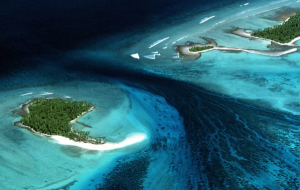by Holly Ryan
Rising sea levels will receive increased attention from climate scientists tomorrow when the Intergovernmental Panel on Climate Change unveils its latest report on the state of the climate.
 Sea level change will, for the first time, claim its own chapter in the IPCC’s 5th Assessment Report – or AR5, as will ‘climate phenomena’ such as monsoon and El Niño, said NIWA climate scientist Dr David Wratt.
Sea level change will, for the first time, claim its own chapter in the IPCC’s 5th Assessment Report – or AR5, as will ‘climate phenomena’ such as monsoon and El Niño, said NIWA climate scientist Dr David Wratt.
“The new chapter on sea level change will be of interest as previous IPCC literature was not very mature, so it was difficult to say too much about projections for sea level. Since the last report there has been a lot of effort to research this area,” said Dr Wratt.
The last IPPC report, released in 2007, found that there was “strong evidence” that global sea level gradually rose in the 20th century and is currently rising at an increased rate “after a period of little change between AD 0 and AD 1900”. The trend is expected to accelerate, driven by seawater expanding as it warms and loss of land-based ice due to increased melting.
AR5 won’t get an official release until 8pm tomorrow night New Zealand time, however a leaked copy of a draft was circulated on the internet this week and suggests scientists expect sea levels will rise by an average of 40 to 62 centimetres by 2100.
The overall range of projected sea level rise has broadened to 29 to 82cm, the leaked draft claims, as scientists have learned more about how glaciers melt and the oceans expand with warming.
The leaked IPCC document currently grabbing headlines is not the first to be circulated widely ahead of its official release. Last year, a climate sceptic who was a volunteer reviewer of the current report, posted an earlier draft online.
Professor David Frame, Director of the New Zealand Climate Change Research Institute at Victoria University, said the climate sceptic backlash had increased steadily since the first assessment report in 1990.
“The science community has to be open and prepared to accept legitimate criticism. Unfortunately it is not always the legitimate criticism that gets most of the airtime.”
Sceptics had highlighted an apparent slowing of the temperature increase over the last fifteen years. Dr Wratt said it was important to look at long-term trends and not get carried away with a short-term view.
“[Looking at temperature graphs] what we actually see is something that looks like a staircase rather than a ramp. Temperatures have risen quickly for a while then levelled off then risen again. It’s the whole picture over the longer period that’s important.”
One of the other main points expected to come from the report and highlighted in the leaked draft was a 95% certainty that humans are driving climate change, up from 90% certainty in the previous report.
The report, written collaboratively by 209 lead authors, comprises 14 main chapters as well as a set of maps showing observed changes since the previous report and varied projections for short and long-term temperature changes and rainfall.
Many policy administrators in areas where sea level change would have a significant impact, such as the Pacific, were hoping the report would provide enough information to make informed decisions for the future.
Earlier this month, fifteen nations in the southwestern Pacific released the Majuro Declaration For Climate Leadership at the 44th Pacific Islands Forum, calling for an “urgent reduction and phase down of greenhouse gas pollution”.
New Zealand and Australia were among the signatories to the declaration, which will be presented to United Nations Secretary-General Ban Ki Moon.
Holly Ryan is the 2013 Science Media Centre science and innovation journalism intern. She is currently completing a Graduate Diploma in Journalism at AUT University and has a BSc in zoology